Abstract
The immune response to a single subcutaneous injection of 5 μg of flagellin from Salmonella adelaide was examined in 108 human subjects. Titrations were performed by tanned cell haemagglutination before and 1, 2, 6 and 10 weeks after injection. The class of antibody was assessed by mercaptoethanol treatment of serum. Antibody which was entirely IgM was present in 86% of sera before immunization: this is referred to as `natural' antibody. After injection of flagellin the response was predominantly IgM, but both IgM and IgG antibody reached peak titres at 2 weeks and both persisted throughout the response. By contrast after a second injection of flagellin the response was almost entirely IgG antibody.
The mean titres of total antibody were significantly higher in females than males, and in healthy subjects as compared with those attending hospital for miscellaneous illnesses. There was no significant quantitative difference in the response of subjects grouped according to their titre of `natural' antibody, but titres fell more rapidly in the group with a low titre of `natural' antibody. Mean titres of `natural' antibody were significantly lower in aged than younger subjects, but there was no significant difference in peak titres after immunization. Immunization with flagellin should have considerable potential as a standard test of `antibody-producing capacity' in man, and be applicable to the investigation of immune deficiency diseases and the effects of immunosuppressive agents.
Full text
PDF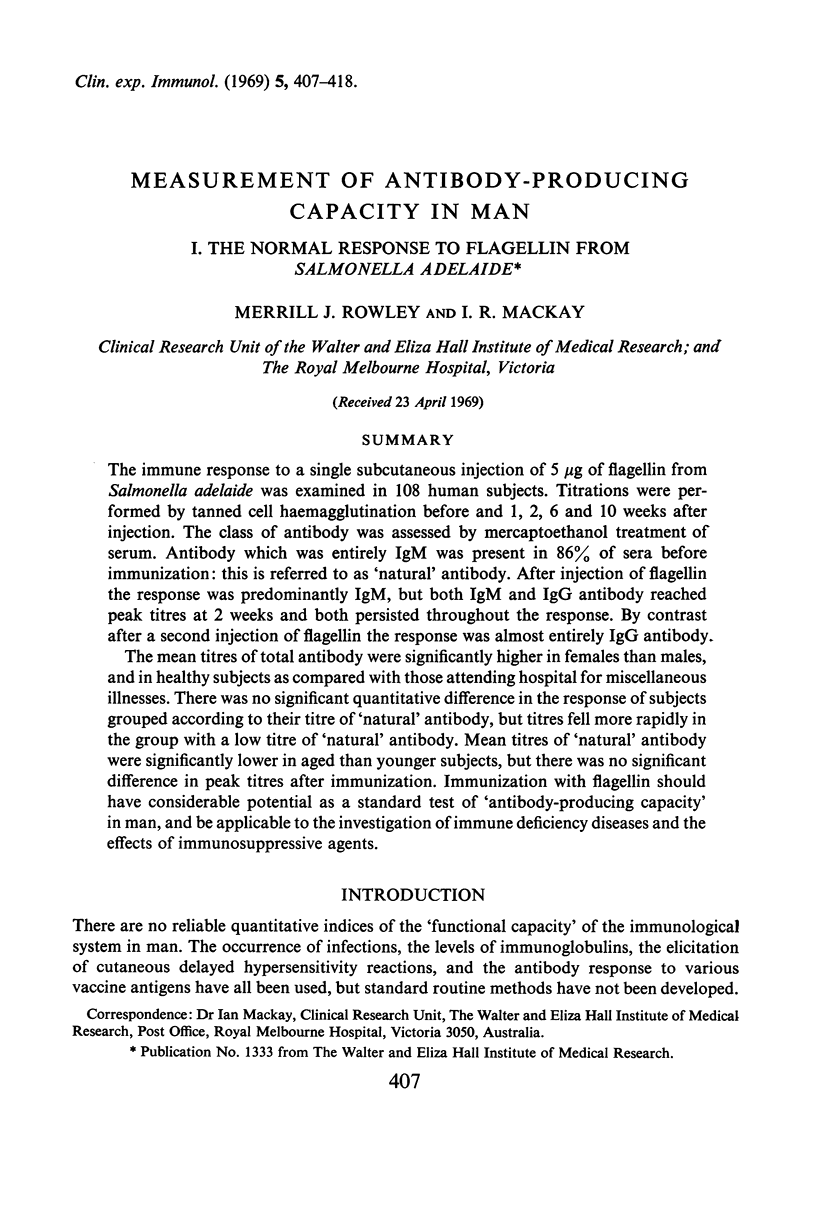
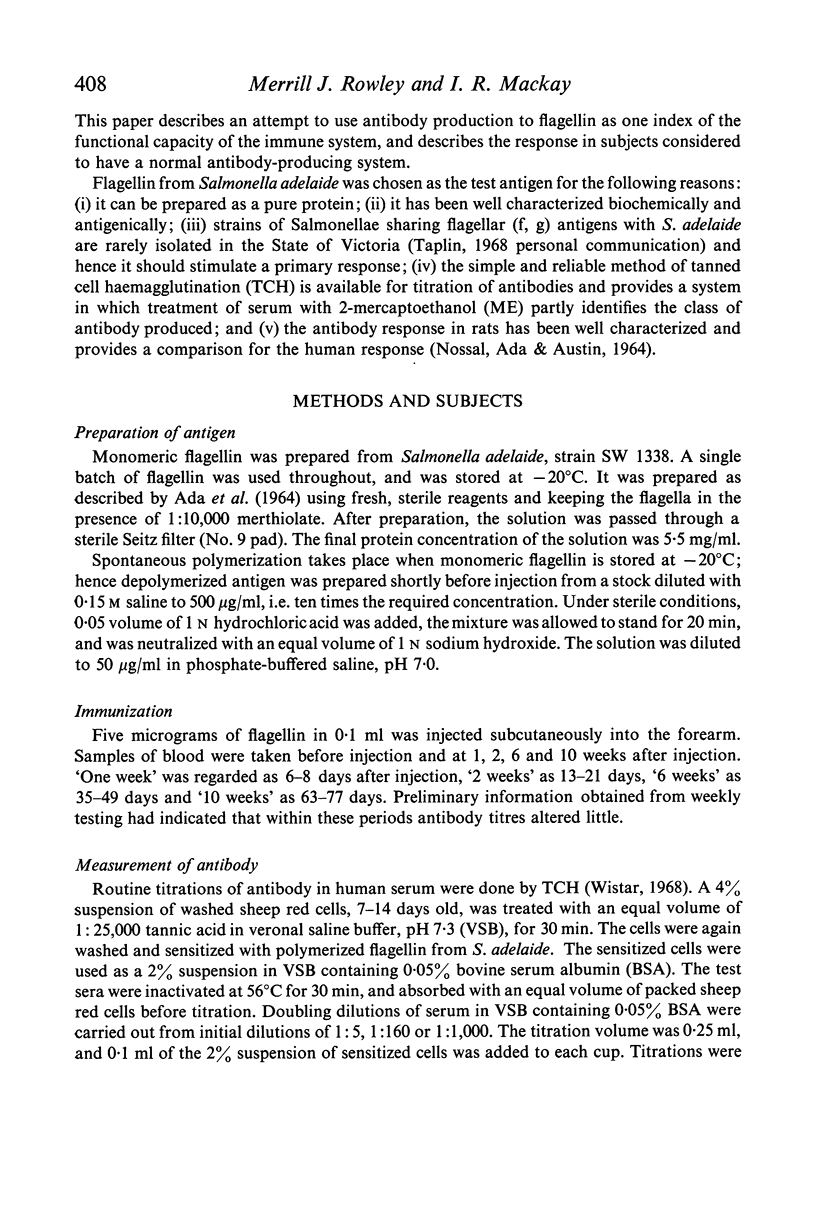




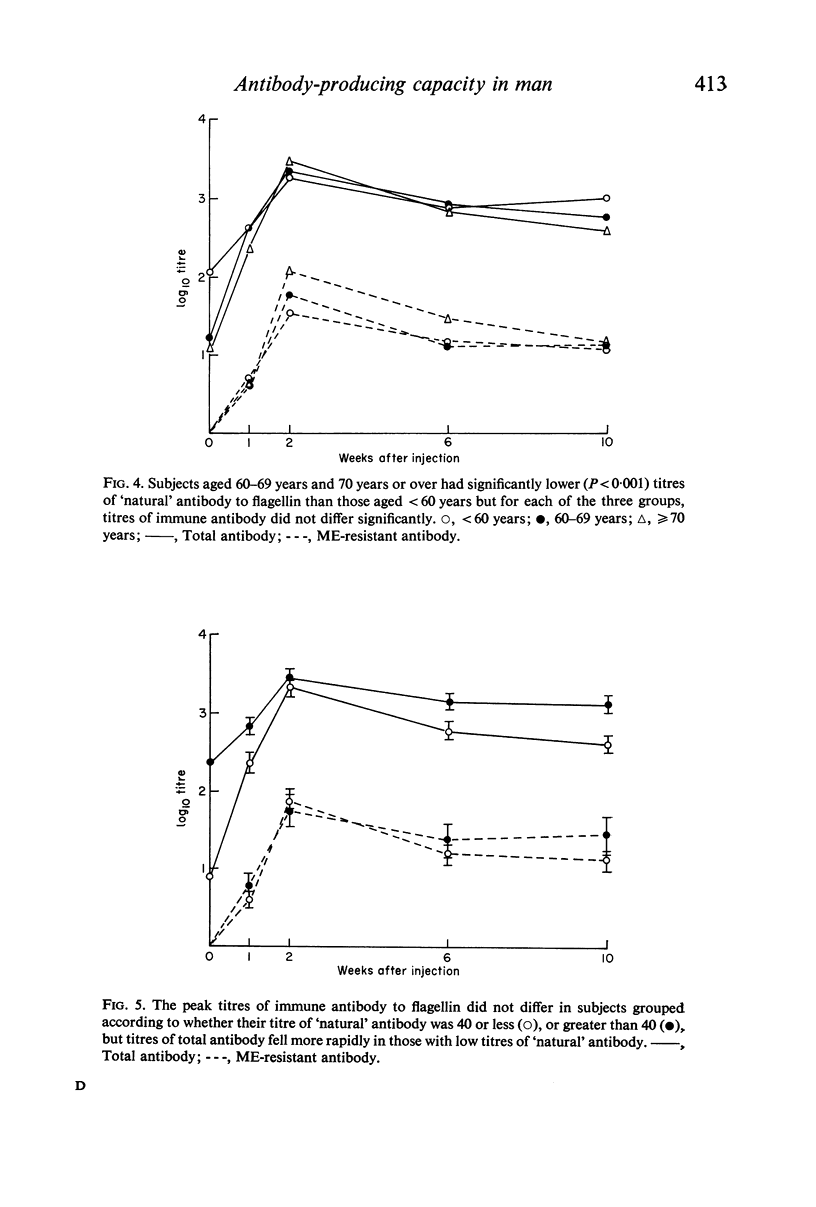
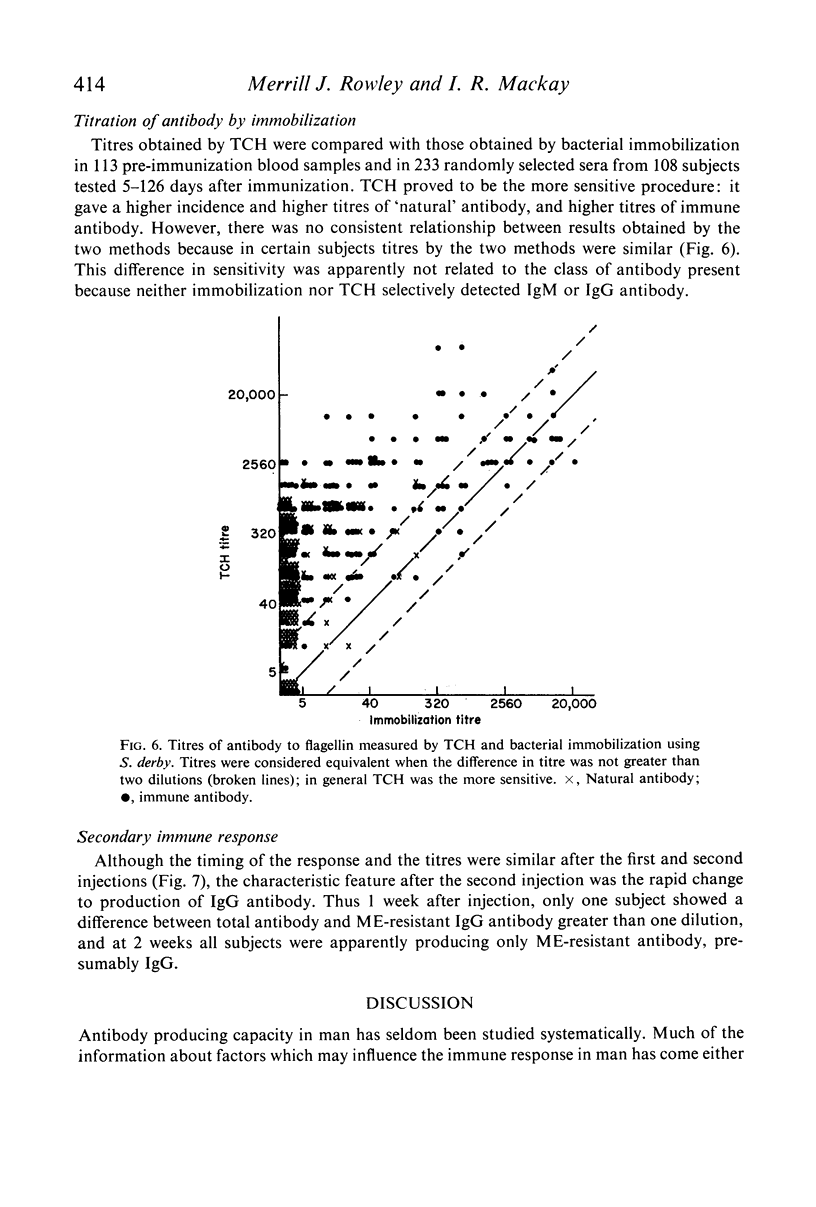
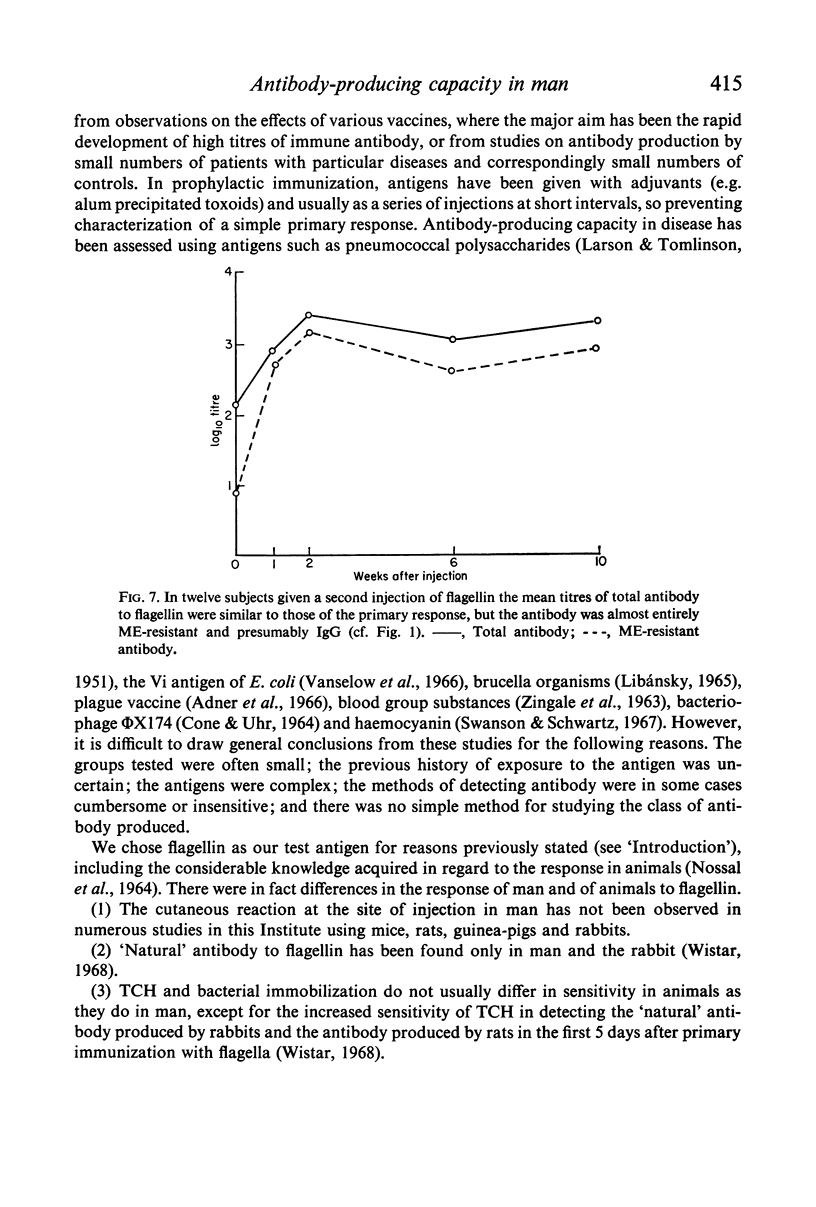
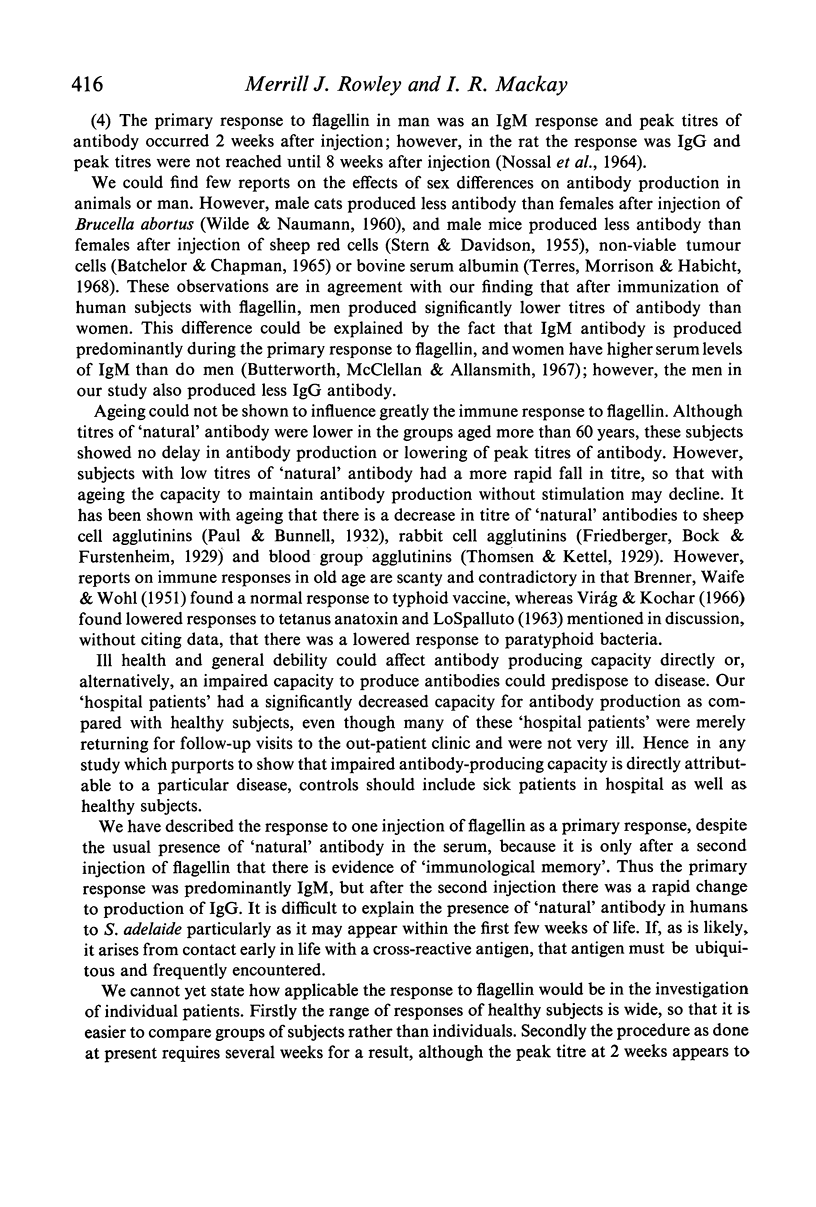
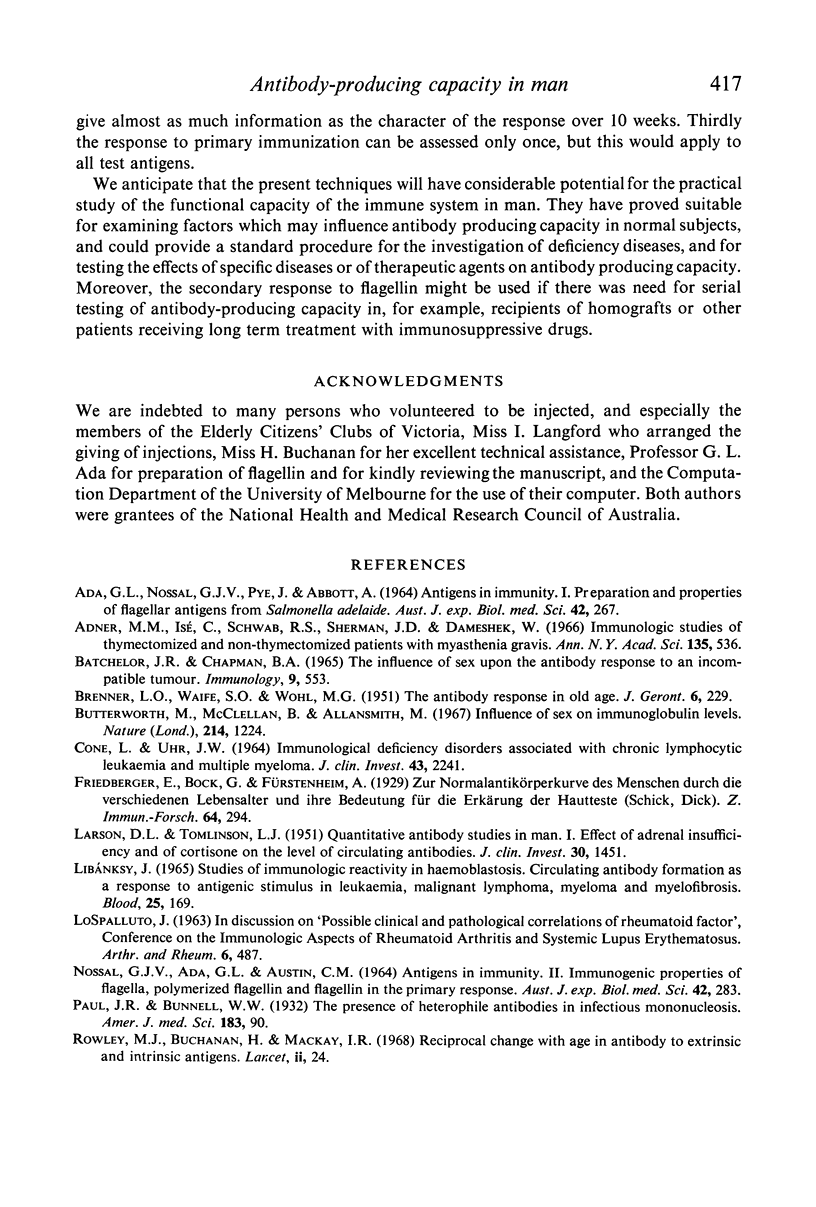
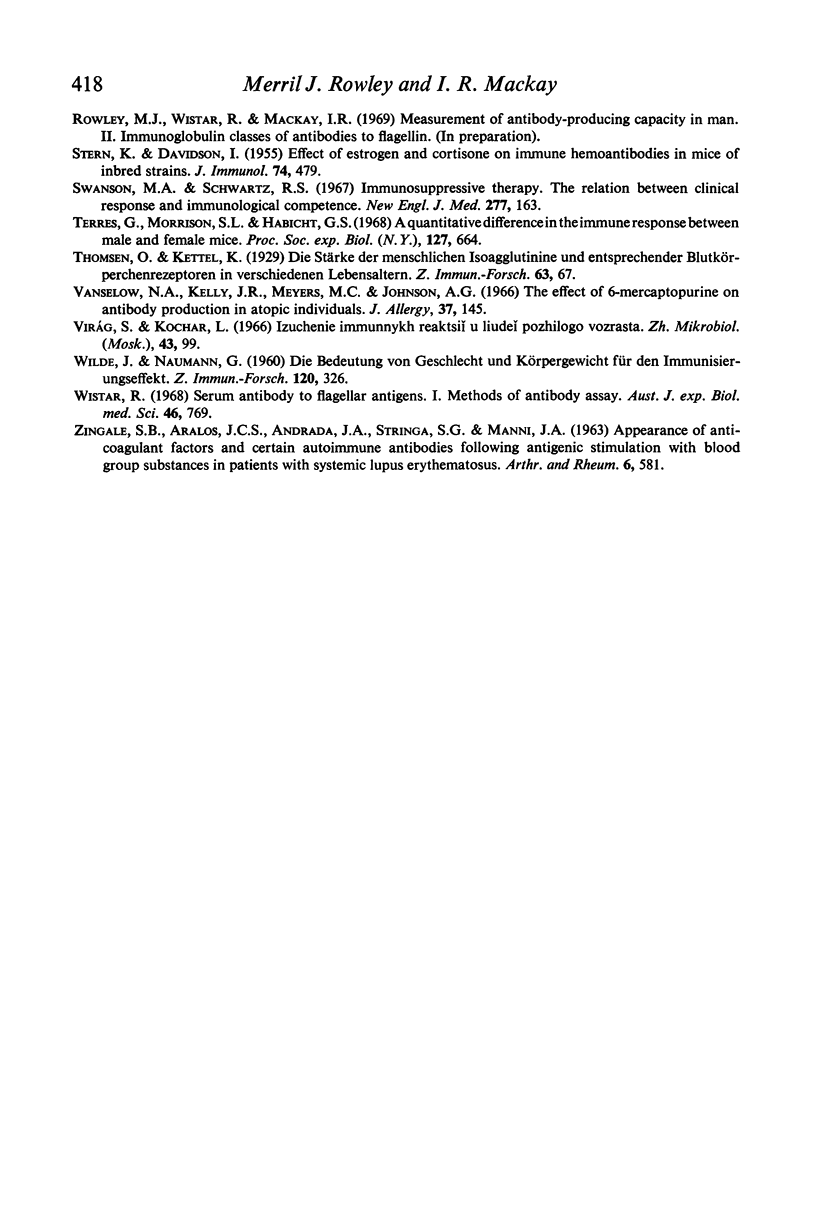
Selected References
These references are in PubMed. This may not be the complete list of references from this article.
- ADA G. L., NOSSAL G. J., PYE J., ABBOT A. ANTIGENS IN IMMUNITY. I. PREPARATION AND PROPERTIES OF FLAGELLAR ANTIGENS FROM SALMONELLA ADELAIDE. Aust J Exp Biol Med Sci. 1964 Jun;42:267–282. [PubMed] [Google Scholar]
- Adner M. M., Isé C., Schwab R., Sherman J. D., Dameshek W. Immunologic studies of thymectomized and nonthymectomized patients with myasthenia gravis. Ann N Y Acad Sci. 1966 Jan 26;135(1):536–554. doi: 10.1111/j.1749-6632.1966.tb45501.x. [DOI] [PubMed] [Google Scholar]
- BRENNER L. O., WAIFE S. O., WOHL M. G. The antibody response in old age. J Gerontol. 1951 Jul;6(3):229–232. doi: 10.1093/geronj/6.3.229. [DOI] [PubMed] [Google Scholar]
- Batchelor J. R., Chapman B. A. The influence of sex upon the antibody response to an incompatible tumour. Immunology. 1965 Dec;9(6):553–564. [PMC free article] [PubMed] [Google Scholar]
- Butterworth M., McClellan B., Allansmith M. Influence of sex in immunoglobulin levels. Nature. 1967 Jun 17;214(5094):1224–1225. doi: 10.1038/2141224a0. [DOI] [PubMed] [Google Scholar]
- CONE L., UHR J. W. IMMUNOLOGICAL DEFICIENCY DISORDERS ASSOCIATED WITH CHRONIC LYMPHOCYTIC LEUKEMIA AND MULTIPLE MYELOMA. J Clin Invest. 1964 Dec;43:2241–2248. doi: 10.1172/JCI105098. [DOI] [PMC free article] [PubMed] [Google Scholar]
- LARSON D. L., TOMLINSON L. J. Quantitative antibody studies in man. I. The effect of adrenal insufficiency and of cortisone on the level of circulating antibodies. J Clin Invest. 1951 Dec;30(122):1451–1455. doi: 10.1172/JCI102552. [DOI] [PMC free article] [PubMed] [Google Scholar]
- LIBANSKY J. STUDY OF IMMUNOLOGIC REACTIVITY IN HEMOBLASTOSIS. CIRCULATING ANTIBODY FORMATION AS A RESPONSE TO ANTIGENIC STIMULUS IN LEUKEMIA, MALIGNANT LYMPHOMA, MYELOMA AND MYELOFIBROSIS. Blood. 1965 Feb;25:169–178. [PubMed] [Google Scholar]
- NOSSAL G. J., ADA G. L., AUSTIN C. M. ANTIGENS IN IMMUNITY. II. IMMUNOGENIC PROPERTIES OF FLAGELLA, POLYMERIZED FLAGELLIN AND FLAGELLIN IN THE PRIMARY RESPONSE. Aust J Exp Biol Med Sci. 1964 Jun;42:283–294. [PubMed] [Google Scholar]
- Rowley M. J., Buchanan H., Mackay I. R. Reciprocal change with age in antibody to extrinsic and intrinsic antigens. Lancet. 1968 Jul 6;2(7558):24–26. doi: 10.1016/s0140-6736(68)92893-6. [DOI] [PubMed] [Google Scholar]
- STERN K., DAVIDSOHN I. Effect of estrogen and cortisone on immune hemoantibodies in mice of inbred strains. J Immunol. 1955 Jun;74(6):479–484. [PubMed] [Google Scholar]
- Swanson M. A., Schwartz R. S. Immunosuppressive therapy. The relation between clinical response and immunologic competence. N Engl J Med. 1967 Jul 27;277(4):163–170. doi: 10.1056/NEJM196707272770401. [DOI] [PubMed] [Google Scholar]
- Terres G., Morrison S. L., Habicht G. S. A quantitative difference in the immune response between male and female mice. Proc Soc Exp Biol Med. 1968 Mar;127(3):664–667. doi: 10.3181/00379727-127-32768. [DOI] [PubMed] [Google Scholar]
- Vanselow N. A., Kelly J. R., Meyers M. C., Johnson A. G. The effect of 6-mercaptopurine on antibody production in atopic individuals. J Allergy. 1966 Mar;37(3):145–157. doi: 10.1016/0021-8707(66)90089-x. [DOI] [PubMed] [Google Scholar]
- Virág S., Kochar L. Izuchenie immunnykh reaktsii u liudei pozhilogo vozrasta. Zh Mikrobiol Epidemiol Immunobiol. 1966 Mar;43(3):99–103. [PubMed] [Google Scholar]
- WILDE J., NAUMANN G. [The significance of sex and body weight for the immunization effect]. Z Immun exp ther. 1960 Dec;120:326–339. [PubMed] [Google Scholar]
- Wistar R., Jr Serum antibody to Salmonella flagellar antigens. I. Methods of antibody assay. Aust J Exp Biol Med Sci. 1968 Dec;46(6):769–777. doi: 10.1038/icb.1968.183. [DOI] [PubMed] [Google Scholar]
- ZINGALE S. B., SANCHEZAVALOS J. C., ANDRADA J. A., STRINGA S. G., MANNI J. A. APPEARANCE OF ANTICOAGULANT FACTORS AND CERTAIN "AUTOIMMUNE" ANTIBODIES FOLLOWING ANTIGENIC STIMULATION WITH BLOOD GROUP SUBSTANCES IN PATIENTS WITH SYSTEMIC LUPUS ERYTHEMATOSUS. Arthritis Rheum. 1963 Oct;6:581–598. doi: 10.1002/art.1780060503. [DOI] [PubMed] [Google Scholar]


